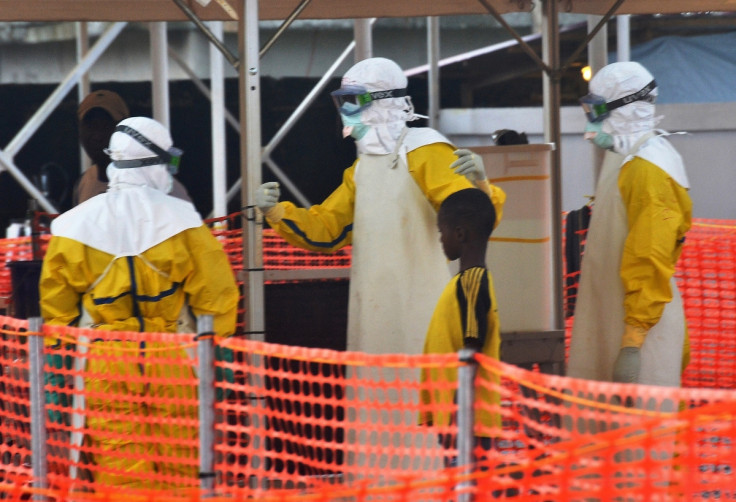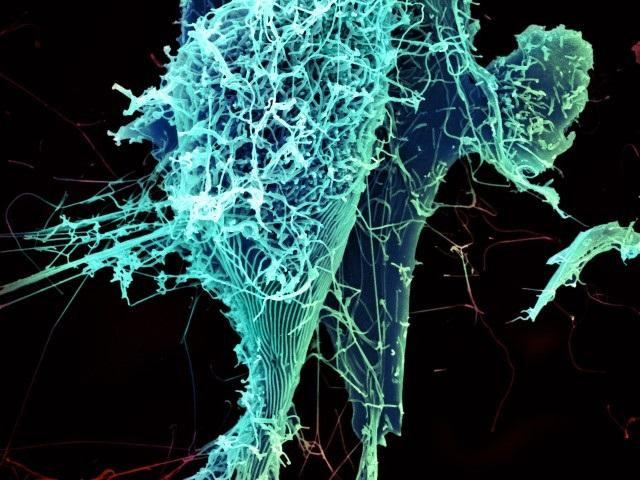Deadly Ebola virus could be passed on through breathing
Signs of Ebola viral replication was detected in the lung five days after disappearing from blood.

The Ebola virus may replicate in the lungs of survivors, while they are recovering from an infection, scientists have discovered. The findings suggest that the respiratory tissues could be implicated in promoting human-to-human transmission of Ebola.
The Ebola epidemic that hit West Africa between 2013 and 2016 was the deadliest to date, infecting more than 28,000 people and killing over 11,000. For those who survived, the challenges did not end when they were discharged from hospital. A range of complications has been documented in recovering patients, from eye problems to musculoskeletal pains.
The most common and severe symptoms of the virus include high fever, bleeding, nausea and diarrhoea. However, lab and animal studies, as well as observations of evacuated patients treated in Europe and the USA, have also indicated that Ebola sufferers may also sustain lung damage as the virus could potentially replicate in respiratory tissues.
In October 2015, the first case of interstitial pneumonia was reported in an Ebola-infected healthcare worker who was evacuated to Italy.
To learn more about the role of the lungs in an Ebola infection, a team led by scientists from The Lazzaro Spallanzani National Institute for Infectious Diseases in Rome tracked down and monitored levels of Ebola virus genetic material in the lungs and blood of a second patient who also presented lung problems consistent with pneumonia.
"Previous epidemics, such as the 1996 Ebola epidemic, were associated with organ failure, including lung failure, but no direct studies in humans had showed evidence of Ebola virus replication in the lungs of patients. We wanted to better understand infection and viral replication patterns in different parts of the body, " lead author Giuseppe Ippolito told IBTimes UK.
Knowing how and where the virus replicates in the body is crucial to improve the clinical management of patients in future epidemics and to empower local health workers to better monitor risks of outbreaks.
"The problem with viral diseases like Ebola is that we don't know much about their pathogenesis. We don't always understand how they infect and how they stay in the body and where. These studies can only be done during epidemics but often there is not much involvement in studying pathogenesis because all efforts are focused on infection control. This study is valuable as it helps us find out more about the virus", Ali Zumla from UCL (London), who also worked on the study, told IBTimes UK.
Longer in the lungs
In this research, published in PLOS Pathogens, the scientists analysed the patient's lung and blood plasma to monitor levels of viral RNA fragments that represent markers Ebola replication.

The researchers discovered that these viral replication markers appeared to remain in the lungs longer than in the blood − for about five days after they were no longer detectable in plasma. The findings suggest that the virus is actively replicating in the lungs. Recovering patients could still pass the virus on even when no traces of it are detected in their blood.
"Ebola is thought to be transmitted by contact with body fluids but in the recent outbreak, we observed that this was not always the case − some people were infected without being in direct contact with patients. This study suggests that Ebola may be transmitted by breathing − something which up to now we didn't think was possible," Zumla said.
More research will now be needed to assess what this means in terms of long-term lung damage and to confirm whether lung infection may be a factor in transmission of the virus between humans.
© Copyright IBTimes 2025. All rights reserved.






















